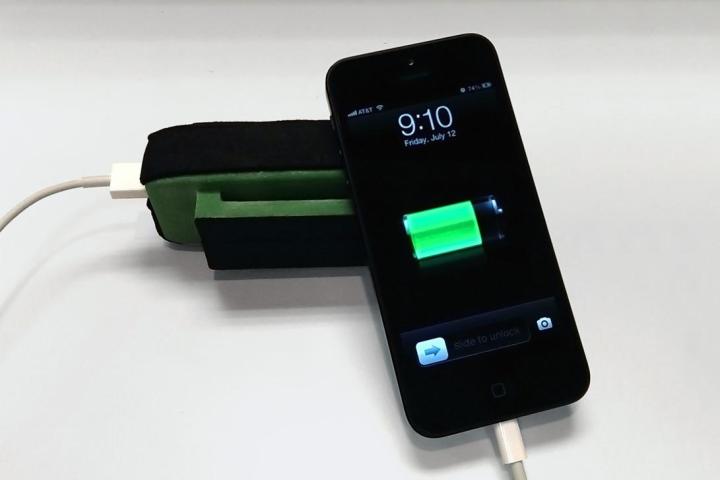
Running just a few miles expends a great deal of energy, so rather than just pissing it away in the name of good health, why not harness some of that energy and put it towards something useful?
That’s the idea behind myPower, a prototype human-powered charging device designed by a team of researchers at Northwestern University. With this device, the amount of kinetic energy you generate during a 45-minute cardio workout can be translated into seven or eight hours of battery life for your smartphone.
Kinetic chargers definitely aren’t a new thing. They’ve been around for decades at this point, and can be seen in things like self-winding watches and “shake-to-shine” flashlights. myPower uses this exact same technology, but is significantly more efficient at converting motion into energy.

At this point in time, the device is still just a prototype. In it’s current form it’s roughly the size/shape of a chalkboard eraser, and features an fixed belt clip so that it can be attached to your clothing as you run. It’s a bit primitive for sure, but prototypes always are, and there’s no reason to think that a healthy dose of industrial design can’t slim myPower down into something you wouldn’t mind running with in the future.
The team is currently seeking funding from angel investors to further develop the device. Find out more here.



